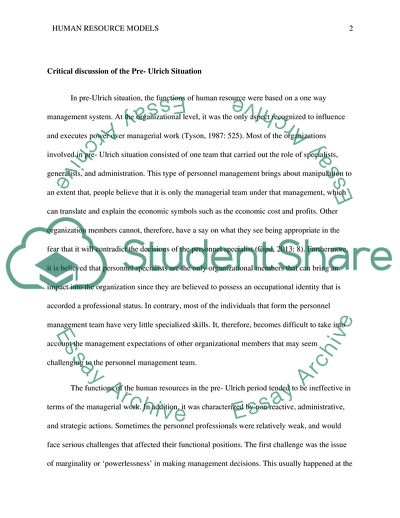Cite this document
(Critically discuss key models and theories which may have influenced Essay, n.d.)
Critically discuss key models and theories which may have influenced Essay. https://studentshare.org/human-resources/1862325-critically-discuss-key-models-and-theories-which-may-have-influenced-the-debate-on-the-role-of-the-hr-function-and-which-may-have-influenced-ulrichaposs-proposals-and-evaluate-the-extent-to-which-his-model-is-adopted-by-organization-and-partitioners
Critically discuss key models and theories which may have influenced Essay. https://studentshare.org/human-resources/1862325-critically-discuss-key-models-and-theories-which-may-have-influenced-the-debate-on-the-role-of-the-hr-function-and-which-may-have-influenced-ulrichaposs-proposals-and-evaluate-the-extent-to-which-his-model-is-adopted-by-organization-and-partitioners
(Critically Discuss Key Models and Theories Which May Have Influenced Essay)
Critically Discuss Key Models and Theories Which May Have Influenced Essay. https://studentshare.org/human-resources/1862325-critically-discuss-key-models-and-theories-which-may-have-influenced-the-debate-on-the-role-of-the-hr-function-and-which-may-have-influenced-ulrichaposs-proposals-and-evaluate-the-extent-to-which-his-model-is-adopted-by-organization-and-partitioners.
Critically Discuss Key Models and Theories Which May Have Influenced Essay. https://studentshare.org/human-resources/1862325-critically-discuss-key-models-and-theories-which-may-have-influenced-the-debate-on-the-role-of-the-hr-function-and-which-may-have-influenced-ulrichaposs-proposals-and-evaluate-the-extent-to-which-his-model-is-adopted-by-organization-and-partitioners.
“Critically Discuss Key Models and Theories Which May Have Influenced Essay”. https://studentshare.org/human-resources/1862325-critically-discuss-key-models-and-theories-which-may-have-influenced-the-debate-on-the-role-of-the-hr-function-and-which-may-have-influenced-ulrichaposs-proposals-and-evaluate-the-extent-to-which-his-model-is-adopted-by-organization-and-partitioners.


